#BLOG2
Explore tagged Tumblr posts
Text
Happy Birthday Iki!
Or happy adoption day! On this day two years ago I took home this lil girl

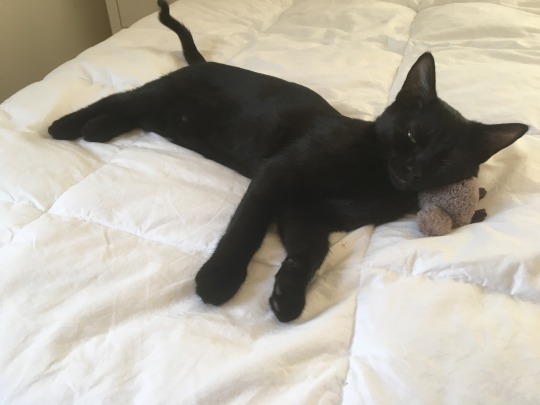
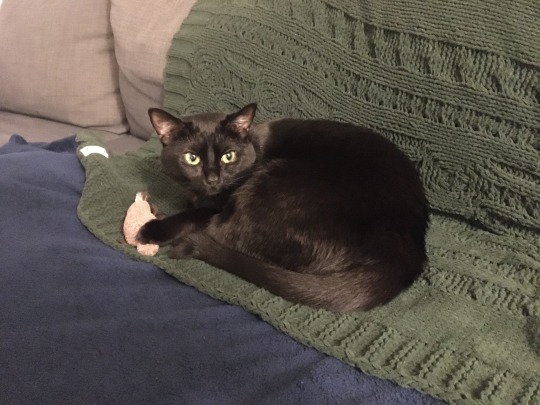
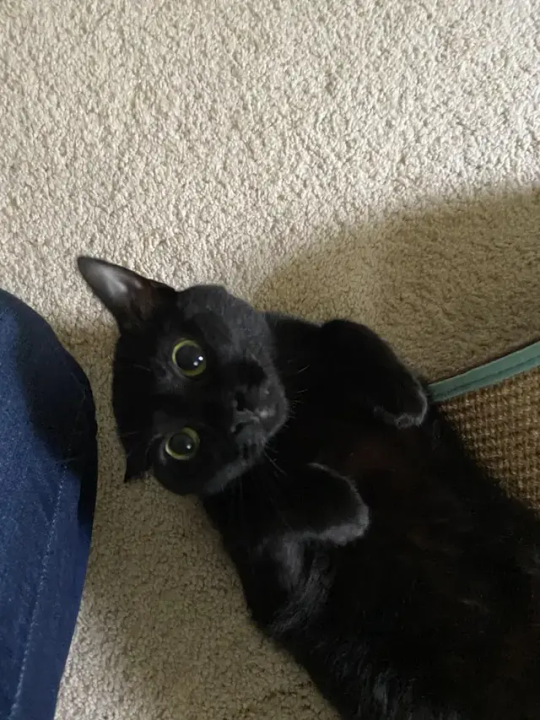
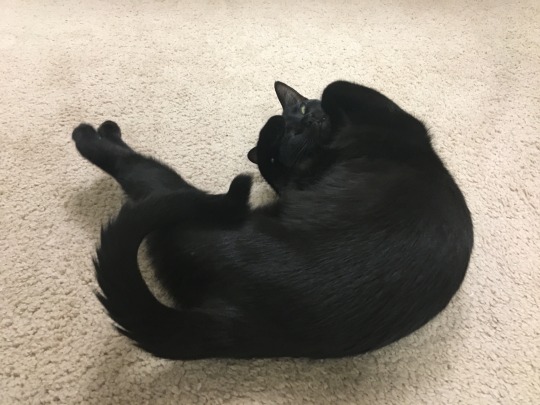
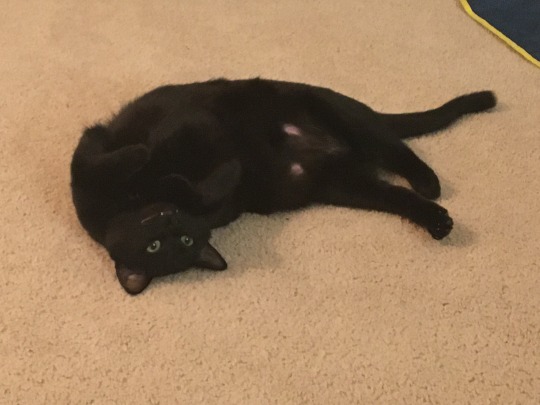
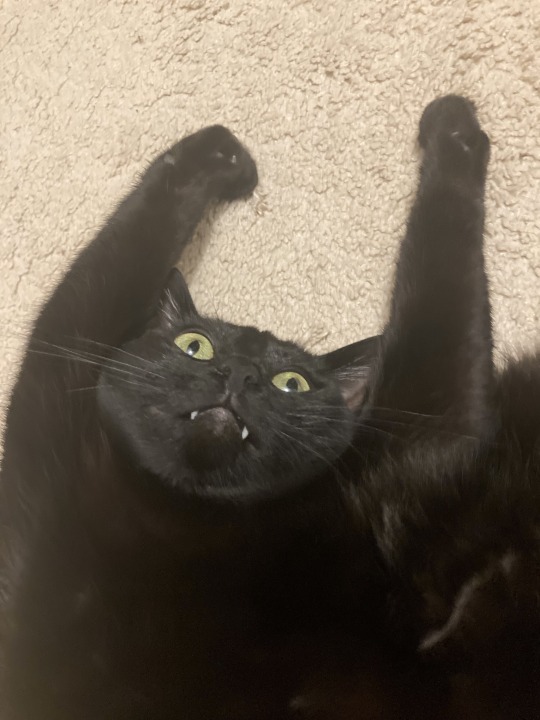
Iki, Iki-Biki, Baboinki, Oinki-boinki My best friend I love her so much and I am so blessed to have her in my life
53 notes
·
View notes
Text
Blog 2: My Ideal Environmental Interpreter Role
Describe your ideal role of environmental interpreter. What might it entail? Where might it be?
The role of an environmental interpreter is to be a bridge between nature and people, helping individuals connect deeply with the environment through education, science, and experience. My ideal role as an environmental interpreter would combine science, creativity, and a passion for sustainability, all while fostering meaningful connections with diverse audiences. At its core, environmental interpretation is about translating the complex language of nature into engaging, accessible narratives that spark curiosity and encourage stewardship. My ideal position would involve leading interactive nature walks in places I am familiar with and that need help being preserved. Becoming an international ecotourism guide would be my ideal job, as leading interactive nature walks through forests in India, Madagascar, or Canada would be the most fulfilling. Biodiversity hotspots around the world are becoming increasingly endangered, and through my experience with international fieldwork, I believe it is vital to connect people with environments both near and far from home. I would also love to collaborate with local conservation organizations and partner with local guides or people who live there so they can also share the beauty of the natural areas.

My time in Ankarafansika National Park, Madagascar, going on an interactive, guided hike!
What skills might you need?
This aligns with some of the skills I already possess and others I may need. With a strong background in international fieldwork in Madagascar and India, I am very comfortable working in protected areas and national parks. Additionally, strong communication skills would be essential for tailoring messages to different knowledge levels and cultural backgrounds. A deep understanding of ecology and environmental science would allow me to convey accurate information about biodiversity, ecosystems, and conservation efforts. Creativity would be crucial in crafting engaging stories and activities that bring the natural world to life, from interactive discussions to immersive environmental art or storytelling. Leadership and organizational skills would also be necessary, especially when coordinating with local conservation groups and guides to ensure seamless, impactful experiences. Ultimately, my ideal role would not only focus on educating people but also empower them to take meaningful action in preserving the natural world for future generations.
How would I engage different learning types?
On these interactive nature walks, I would incorporate a variety of activities that appeal to different senses and learning preferences. For visual learners, I would use vivid imagery, maps, and field guides, along with highlighting the beauty of the natural surroundings. For kinaesthetic learners, I would encourage hands-on activities such as collecting samples, participating in conservation efforts like tree planting, or using nature as a medium for creative expression, such as sketching or photography. By varying my approach and incorporating multiple sensory experiences, I would ensure that every participant feels engaged, regardless of their preferred learning style. I would also encourage group discussions and reflections to foster a sense of community and shared responsibility for nature, further strengthening the impact of the experience. By adapting to my group on each walk, I would provide the best possible experience so they may leave the walk with a sense of place if they truly connected with it, or at the very least, an awareness of how the natural world is disappearing and all the things we can do to preserve it.
2 notes
·
View notes
Text
The way some people can open up and talk about anything to their parents and not have any repercussions to it, makes me so resentful.
#blog2#childhood truama#familytrauma#generational trauma#envy#daddy issues#mommyissues#daddyissues#mommy issues#innerchild#stillhealing#lonelycatastropheblog#blogging
16 notes
·
View notes
Text
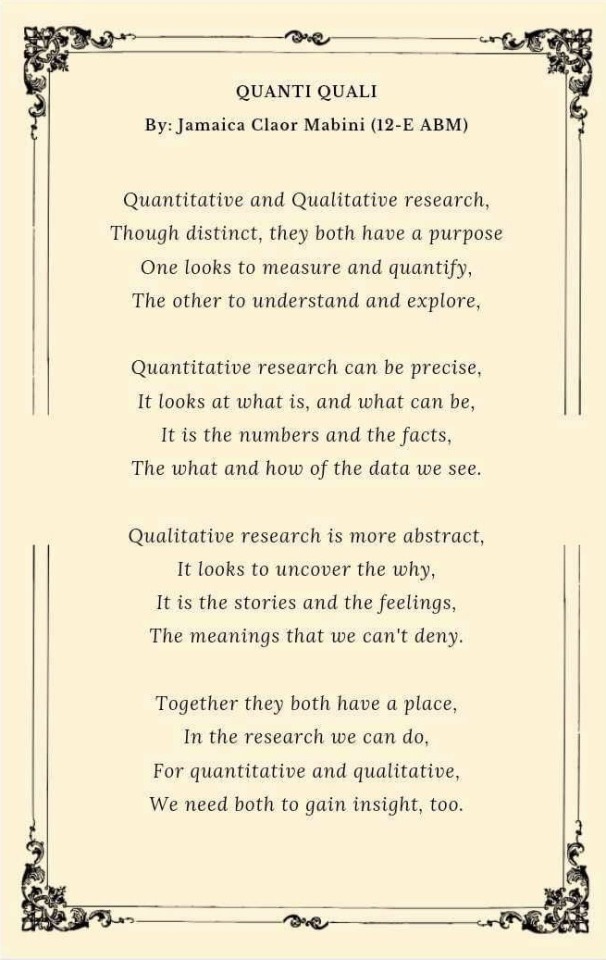
MABINI,Jamaica C.
12-E ABM
3 notes
·
View notes
Text
January 3rd 2025
I didn't go into work again today and now I am wondering if there is something wrong with me that is just unfixable.
Drastically different tone than my last entry but I think sitting at home for four days in a row is enough to pollute my entire being if I let it and I always let it, I almost can't resist it.
I've actually been thinking lately that I would be much more content to stay home all day and be awake all night by myself writing and doom scrolling until the end of time. Maybe that's why I haven't fixed my sleep schedule or should I blame it on something easier like the snowy weather and my dad obsessively vacuuming into late hours of the night.
Whatever it is I am exhausted and I'm even more exhausted of being exhausted.
Nothing has even happened that triggered this form of thought I just am overthinking about my bad spending habits and why I can't seem to resist the urge to spend fifteen here or ten here when I know it will add up.
I don't make enough money to splurge as is and I absolutely won't when I'm paying rent and fixing up whatever shitty car I buy four times a month.
So why am I missing work so much to the point that my check is cut in half and yet sitting here scrolling photocard forums like I am about to make my next big purchase. I have negative a singular dollar in my account and have the nerve to get excited about the Deftones tour like I would ever be able to attend without possibly running out of dog food or things to eat.
There is some part of me that knows this stems from being poor in childhood and always wanting, always feeling stomach turning jealously at my friends houses that led to me calling my mom early and begging for a ride home. I couldn't stand to eat dinner around a table and hear them ask for a new pair of shoes because theirs got too dirty.
Maybe it would make me feel better to keep blaming all of my issues on my shitty childhood but I am not a child anymore and doing that is what makes cycles repeat themselves.
My dad still brings up his dad when he hits a particularly low point.
Next week I will stop missing work and I will accept my tiny check as a punishment for my bed rotting that has left my back aching and my mind as gross as it is right now.
This weekend I probably will stay up too late again and I will have to drag myself in on Monday but luckily I know myself enough to know that I won't dare call in even if I can't stand. Not because I'm mature and can weigh the consequences of that but rather because it makes me feel embarrassed to be the person who doesn't show up.
I've always been that kid and I don't think it's as forgivable once you're in your twenties.
Still haven't adapted to the fact that I am in my twenties and that I only go further into them from here. There is no reverting backwards and I will never be nineteen again even if my mind stays there forever, I will try not to leave it behind but I'm not too sure about that at this point.
What if it really is not meant for me? Damn you Wolf Alice.
0 notes
Text
i dalje sam pesimističan, samo sam više introvert pa zato i promena imena.
06:10h je
sna bez
treba mi limunada 🍋
prijatan jutro/dan/veče/noć vam želim
0 notes
Text
Can Social Media Be Used To Spread Health Awareness?
In 2024, it can be said that everyone is familiar with the words “social media”, a term synchronous with dopamine-seeking Internet users that scroll endlessly on their phones all day with their eyes glued to an LED screen. Though this may seem worrisome, which it is, social media has several upsides to it that make the aforementioned issue seem justifiable.

Specifically, social media can be used to spread health awareness to its users. The infamous Ice Bucket challenge in 2014 was started to promote awareness of the amyotrophic lateral sclerosis disease and also showcases the unmatched potential social media wields when it comes to educating the public on urgent issues currently plaguing in the world.

Mohammed W. et. al. (2021) said that social media holds significant potential for sharing information about healthy behaviors, disease prevention, treatment, management, and care.

Additionally, health educators have leveraged social media to establish support groups, advocate for health equity among disadvantaged communities, engage with partners, and dispel misinformation on public health issues. As technology advances and social media evolves, it is becoming a powerful tool for raising awareness, educating on socially relevant topics, and conducting activities, online courses, and classes more efficiently than traditional face-to-face interactions (Latha K. et. al, 2020). Latha K. et. al. (2020) continues in their report saying that social media facilitates the connection of people, leading to increased exchange of information regarding health.
Continuing from the aforementioned Ice Bucket challenge are other challenges with similar aims of spreading health awareness to social media users. Another example is the No Make-Up Selfie challenge whose main objective was to spread cancer awareness by having women post selfies where they were not wearing make-up. BC NEWS (2014) stated that the trend grew on its own and was not started by cancer charities or organizations. Additionally, we have “Movember”, which is a trend where in every November, men were challenged to grow mustaches and both men and women were urged to be more physically active to raise awareness about men’s mental issues. Movember began in Australia in 2003 to raise awareness about men’s health issues. By 2004, it became an official charity, with all proceeds directed to the Prostate Cancer Foundation of Australia (Manulife Malaysia).

However, social media users should still be wary of any health-related information they come across on the internet or the various applications they use. The spread of health misinformation is rampant in the digital world, and many have already believed its false claims. Chou W. Y. S. et. al. (2020) defines health misinformation as any health-related statement of fact that is inaccurate according to current scientific consensus. Monica L. W. (2024) wrote that vaccines are the leading subject of misleading health information with some myths being infertility after vaccination and supposed cause of autism related to vaccines. Not surprisingly, these hoaxes have led to the demise of many people, as seen in the recent COVID-19 pandemic, there was widespread confusion between people who opposed vaccination and those who supported it. According to the data from Brown University School of Public Health, approximately 319,000 COVID-19 deaths in the United States between January 2021 and April 2022 could have been prevented if those individuals had been vaccinated (Monica L. W., 2024).

The myriad of false information on the internet and social media alike have grown to immeasurable proportions. With at least 80% of online people using the internet for health-related topics, an NBC News analysis has raised concerns about what type of information these people may have run into (Brandy Z., 2019). Brandy (2019) continues in her article writing that cancer is the most common topic of health misinformation, with viral articles advocating unverified cancer cures accounting for one-third of their list.

Having said all this, it seems obvious that the cons far outweigh the pros in this scenario. The damage that health misinformation on the internet has done is severe and long lasting, forcing users to think twice about every article or post they come across that is related to health. However, I still believe that social media can be used to spread health awareness effectively. With the right support, audience, and a solid foundation built through trust and results, individuals and organizations alike can utilize the vast power of social media to bring health education to the masses.
------------------------------------------------------------------------------
References:
Brandy Z., 29th December 2019, Social media hosted a lot of fake health news this year. Here’s what went most viral, NBC News, viewed 24th October 2024, https://www.nbcnews.com/news/us-news/social-media-hosted-lot-fake-health-news-year-here-s-n1107466
Chou W. Y. S., Gaysynsky A., Capella J. N., October 2020, Where We Go From Here: Health Misinformation on Social Media, PubMed Central, viewed 24th October 2024, https://pmc.ncbi.nlm.nih.gov/articles/PMC7532328/
Latha K., Meena K. S., Pravitha M. R., Dasgupta M., Chaturvedi S. K., 28th May 2020, Effective use of social media platforms for promotion of mental health awareness, PubMed Central, viewed 23rd October 2024, https://pmc.ncbi.nlm.nih.gov/articles/PMC7325786/
Manulife Malaysia, Get Ready for Movember because there’s #nothingtofear, Manulife, viewed 23rd October 2024, https://www.manulife.com.my/en/individual/insights/get-ready-for-movember-because-nothing-to-fear.html
Mohammed W., Alanzi T., Alanezi F., Alhodaib H., AlShammari M., 2021, Usage of social media for health awareness purposes among health educators and students in Saudi Arabia, Elsevier, viewed 23rd October 2024, https://www.sciencedirect.com/science/article/pii/S2352914821000435\
Monica L. W., 9th February 2024, POV: Health Misinformation Is Rampant on Social Media, BU Today, viewed 24th October 2024, https://www.bu.edu/articles/2024/health-misinformation-rampant-on-social-media/
Roy R. & Malloy J., 8th May 2023, Evolving Role of Social Media in Health Promotion, Intechopen, viewed 23rd October 2024, https://www.intechopen.com/chapters/87491
BBC NEWS, 22nd March 2014, Why the ‘no make-up selfies’ campaign raised £2m, BBC NEWS, viewed 23rd October 2024, https://www.bbc.com/news/health-26683817
1 note
·
View note
Text
On the coast where I (don’t) belong
I’m in LA to meet Pete Wentz. Not really tho, I drove 2 hours for 2 seconds of his time maybe a little more.But I stand here in line and I wonder why I’m here. I’m sure this grown man is exhausted and doesn’t want to really meet any of us or at least me. But I’m not him so I can’t really say. I always have these false beliefs of what people believe of me. Especially people I admire and want in my life. Like I made this new friend in one of my classes and I’m already wondering if he wants to really be friends with me or if I’m just a temporary thing till the semester ends. I’m supposed to be getting a tattoo after meeting Pete Wentz (it’s in my life’s bucket list) but this feels so impersonal I don’t know if it really counts. I don’t know. My mind is running wild on what people assume of me right now. Even the people who (won’t) read this. This is for me, I can say what I want to an extent I guess. I’m nervous but also I know it’s going to be like the Mona Lisa. Maybe not. Don’t follow my train of thought. All I know is that I’ll be disappointed because I have this idealized version of him in my head but in reality he’s just a person and no person should be placed on that high of a pedestal. Yet I still love him (platonically) and see so much of myself in him. I can’t explain it tho. I’ll probably write again later tonight when I’m home but I’m not expecting much and yet expecting everything at the same time.
0 notes
Text

Transformation In Adult Learning And Types of Learning Experiences...
From our readings in module 5, I’ve gleaned how “transformation” in the context of adult learning relates to how individuals critically assess and revise their deeply held beliefs and worldviews. Paulo Freire’s Education for Critical Consciousness (1973) has elucidated the terminology, transformation, as a process that is rooted in learners’ ability to engage with their temporal existence and critically reflect on their social realities. From this, I've gathered that true transformation involves the active integration of one’s experiences meshed together with an active awareness of time—where we are accountable for understanding the past, evaluating the present, and consciously shaping the future.
Meanwhile, Mezirow’s concept of transformation (2000) differs from Freire’s in the matters concerning critical reflection and the development of a more in-depth understanding of one’s socio-political environment. As Merirow’s “transformation” calls for individuals to challenge their existing frames of reference—which can range from epistemological, ethical, logical, etc.—to make them more adaptable to transformative learning. Comparatively, Mezirow's concept of transformative learning aligns with Freire's in its emphasis on reflection, but it diverges in its focus on personal cognitive transformation and personal empowerment rather than broader socio-political change.
Whereas, Freire contrasts transformative learning with passive adaption to emphasize that learners must actively integrate knowledge into their lives to achieve true critical consciousness. This type of learning compels individuals to recognize systemic injustices, challenge oppressive structures, and become empowered agents of change, marking a significant departure from traditional, more informative learning experiences, which often focus on acquiring knowledge without fostering critical awareness. In sum, both theorists highlight the critical reflection process, but while Freire emphasizes collective, societal transformation, Mezirow focuses on individual cognitive development and personal empowerment.
A Significant Experience And How it Shaped My Actions Moving Forward
Freire and Mezirow’s conception of “transformative” learning has opened my eyes to new perspectives, more specifically as an aspiring educator it taught me of the importance of transitioning from passive acceptance of societal norms to actively questioning such systems in place. Likewise, inspired by Paulo Freire’s notion of critical consciousness and temporality, both made me rethink of my experiences as not static but part of an ongoing process of becoming.
This reflection became a disorienting dilemma, echoing Freire’s idea of integration, where I started to critically engage with my reality rather than merely adapting to it. It led me to commit to myself a promise of participating more actively in community-led initiatives than I have been previously, advocating for educational reforms in any means I could, and realizing that empowerment involves not only understanding but also actively transforming one’s circumstances. This proactive engagement aligned with Jack Mezirow’s transformative learning phases, where critical assessment of assumptions, planning new actions, and trying out new roles became essential steps in my journey toward personal and social change.
Moving forward, this event reshaped my commitment to education and social justice. My understanding of both Freire’s and Mezirow’s frameworks deepened my resolve to use education as a tool for empowerment, where learning is not just informative but transformative—helping others, like myself, to actively engage with and reshape their worlds.
Informative Learning VS Transformative Learning And Its Implications
Informative learning, as Freire discusses in Education for Critical Consciousness (1973), refers to gaining knowledge or skills without necessarily altering one’s perspective or challenging pre-existing beliefs. This form of learning is about acquiring information that enables individuals to adapt to their environment, but it may not lead to critical engagement or transformation. In my professional life, I have experienced informative learning when acquiring technical skills, such as when I mastered a software application called Orange Data Mining Tool. While valuable, this learning primarily enhanced my ability to function within the given system without provoking a deeper examination of its structure or purpose.
In contrast, transformative learning, as defined by Mezirow (2000), involves a fundamental shift in one’s worldview through critical reflection, leading to a revision of deeply held beliefs. Freire echoes this with his emphasis on critical consciousness, where individuals not only reflect on their own learning but also on the socio-political forces shaping their reality. In my personal life, transformative learning occurred when I engaged in community work that challenged my assumptions about inequality, which fondly reminded me of the time when I initiated a book donation drive for urban poor children in Tondo. Through critical reflection and dialogue with others, I developed a deeper understanding of systemic issues and began taking action to contribute to social change.
Both forms of learning have played important roles in shaping my personal and professional growth. Informative learning has equipped me with practical skills, while transformative learning has fostered a more critical and engaged perspective, empowering me to actively participate in the transformation of my surroundings. This blend of gaining knowledge and changing perspectives is crucial in fostering both individual and collective progress.
References:
Freire, P. (1973). Society in transition. In P. Freire’s Education for critical consciousness, pp. 3-20. NY: The Seabury Press.
Mezirow, J. (2000). Learning to think like an adult: Core concepts of transformation theory. In J. Mezirow et. al. Learning as Transformation: Critical perspectives on a theory in progress, Chapter 1, pp. 3-33. CA: Jossey-Bass.
0 notes
Text
Knowing Me (MBTI Test) 👩🦰

I often hear the questions, what is your MBTI? And every time I watch an interview they always ask for it. So I got curious and searched it online, that is where I found out what it is all about. MBTI or Myers–Briggs Type Indicator Personality Test is a test to determine what kind of personality you have. It will help to somehow know yourself more and why you acted that way.
As you can see in the picture above, that is the result of me taking the 16 personalities test or MBTI. Upon knowing the result I was so shocked because somehow it fits my personality. The result shows that I am a Consul (ESFJ-T). Having this kind of personality means that they are very caring, social, community-minded people who are eager to help. They take their responsibility seriously in order for them to give back, help others, and fulfill the task they were assigned. That they judge or make decisions not only for themselves but also for others. They consider what others will feel of the actions they made. Building relations with other people is important for them because they are making sure that everyone will belong and not left behind.
In which this description fits me perfectly because I care a lot for people whom I love just like my family and friends. I always make sure that they're okay and ask them if they are safe. When it comes to responsibilities, I always make sure that I fulfill all of them because I don't want people to be disappointed. And also I want to make sure that everything is align to the plan because I am a type of person who is likely to be organized from the plan to execution. I'm also a perfectionist when it comes to project and group work. In terms of my emotions, it has been on my mind that every time I make a decision or plan I always think about what others will feel. I will consider if the decision made was okay for them so that if ever they don't like it I can analyze a solution. Moreover, I'm also observant. For example, if I sense that you are not in the mood and you don't want to talk to me, I will let you alone for the meantime. Being an ESFJ-T it is not just talking about how responsible and caring I am but also I am also sensitive to stress and consciousness, which somehow I need to change because too much stress is not good for health. That too much consciousness in everything I do will just lead me to fear of failing and not of success. And worst even in a small problem I'm making myself stressed to the point I can't control my feelings.
Knowing these things about my personality helps me to further understand myself. It allows me to identify what aspect I am good or bad at. It shows me a clearer insight into why I think, feel, and act that way. The discovery I make for myself will be a tool for personal growth reminding me that while I am defined by my actions and choices, I also have the holds for change, improvement, and a balanced life. I believe that my journey of self-discovery is on-going, and that I still have a lot to discover and embrace.
0 notes
Text
MBTI Personality Test

So upon taking the MBTI Personality Test, this is the result I go which is more accurate than I imagine. 72% on INTROVERT which is pretty much right because I hate crowded place. I would rather enjoy my time hanging out alone or studying alone than to do it with 10+ people.
61% on OBSERVANT. I observe people around me so that I could adjust myself on what type of energy should I interact with them. I observe people for my own purpose so that I can at least think in advance.
51% on FEELING. Most of my decision on my life is based in between feelings and logical but I often go for the feelings because of the consequences of not acknowledging someone's feelings or even mine. Also I am a sensitive and expressive man to my close friends.
71% on PROSPECTING. This one im not so sure, I don't adapt that well to anyone or anything, also my productivity and mood depends on who am I with or where the place is.
90% on TURBULENT which is very accurate because I am self conscious and always blame on myself that I could be a better man but still not, I always push myself to my limits so that I won't get stuck to where I am right now because I believe I can do more and be a better than what I am today.
0 notes
Text

MBTI TEST RESULT
As I took the MBTI test, or the Myers-Briggs Type Indicator, I felt like I didn’t completely know myself. Back in junior high school, one of my friends asked me to take the MBTI test to learn about my personality. So I took the test, and the result showed that I was an ESFJ at that time. For a long period, I believed that I was an extrovert, also because this is how my friends identify me before. They also thought I was extroverted because I could easily get along with people, even if it was our first meeting. We all relied on this as the reason to identify my personality as extroverted. However, as time went by, the results changed.
This is only my second time taking the personality test, and it showed ISTP-A, with the first indicator showing that I am 51% introverted—quite different from the result I received in junior high school. I even took the test three times, thinking I might have skipped some parts or misunderstood the questions, but the result remained the same. However, after reading the analysis, I feel like this description fits me better.
I believe that the change in results indicates a development in my personality. It doesn't have to be seen in a negative way; rather, it suggests that I have gained more self-awareness and life experiences, which contributed to this shift in the results.
HERE ARE THE RESULTS UPON TAKING THE MBTI TEST:





51% Introverted: I prefer to be alone sometimes, avoiding social interactions because they can be draining for me. However, spending time with my friends helps me recharge, especially when it’s a smaller, more intimate group.
75% Observant: I pay more attention to the real and useful aspects of life because I am more observant than intuitive. I prefer not to take action based on information that I don't fully understand or know. This is something that I think will be useful to me in the future.
53% Thinking: I felt that this aspect of myself was both a strength and a weakness. I became aware that sometimes I would ignore someone's feelings in favor of focusing too much on the objectives and the outcome. I'll figure out how to achieve a balance on this.
79% Prospecting: I'm flexible and can easily adjust to a new environment. This aspect, in my opinion, will be helpful to me, but it will also present challenges when I have to incorporate it into a routine or long-term plan.
56% Assertive: Sometimes I second-guess my decisions in life, but overall I have trust in my views and actions. I make an effort to approach obstacles positively and have confidence in my ability to handle any situation that arises. This way of thinking enables me to accomplish tasks without becoming overly stressed, even in the face of failures. I consider it a strength in both personal and professional matters that, despite not being overly domineering, I know when to speak up and make my voice heard.
1 note
·
View note
Text
The West Philippine Sea Dispute
The contested expanse of the South China Sea (SCS) holds profound significance for the Philippines, extending far beyond mere geographical proximity. The 2012 renaming of a portion of the SCS as the "West Philippine Sea" (WPS) stands as a multi-layered strategic response employed by the Philippines to navigate the complex legal, political, and socio-economic realities arising from overlapping maritime claims in the region. This act necessitates a nuanced analysis,revealing the interwoven strands of international law, national identity, and resource protection that comprise the essence of the "WPS" designation.
On the legal front, the Philippines, like any coastal state, possesses legally recognized entitlements under the United Nations Convention on the Law of the Sea (UNCLOS). These entitlements include an Exclusive Economic Zone (EEZ) and, in some cases, an extended continental shelf (ECS). These zones are critical for securing marine resources, fostering economic activity, and ensuring national security. However, China's expansive "nine-dash line" claim significantly overlaps with the Philippines' maritime entitlements, posing a direct challenge to their legitimacy and jeopardizing their economic and strategic interests.
The act of renaming a portion of the SCS as the "WPS" serves as a multifaceted response to this complex geopolitical landscape. Legally, it signifies the Philippines' unwavering commitment to international law and their unwavering assertion of their UNCLOS-derived rights within the contested maritime space. By reclaiming the geographical nomenclature, the Philippines aims to delegitimize competing claims and strengthen their legal position in any potential dispute resolution mechanisms.
Politically, the "WPS" designation serves as a rallying cry for domestic support and strengthens national resolve in the face of external pressure. It fosters a sense of shared ownership and responsibility over the contested waters, mobilizing public opinion and political will towards safeguarding national interests. This resonates deeply within the Filipino national consciousness, where historical narratives emphasize the importance of maritime resources and the defense of territorial integrity.
Socio-economically, the "WPS" designation serves as a tool for reclaiming and protecting the livelihoods of coastal communities directly impacted by overlapping claims. By asserting its rights to the contested waters, the Philippines aims to ensure continued access to vital fishing grounds and marine resources, safeguarding the economic well-being of coastal communities and contributing to national food security.
In conclusion, the "WPS" designation transcends mere geographical renaming. It embodies a strategic response to complex legal, political, and socio-economic challenges posed by overlapping maritime claims in the SCS. It serves as a potent symbol of the Philippines' commitment to international law, its national identity, and the well-being of its citizens.Understanding the multifaceted nature of this act is crucial for navigating the intricacies of the SCS dispute and appreciating the nuanced perspectives of the stakeholders involved.
1 note
·
View note
Text
Start of a New Day



I woke up early in the morning very excited because I am going to Lianga, Surigao del Sur for taking an exam at NEMSU to unlock another opportunity. When I am at the test center, I felt nervous and worried thinking if I failed the exam because it is one of my biggest opportunity to start my college life sooner.
After I finished the exam, I felt relieved and excited because afterwards we're going to the beach together with my classmates/friends as what we've decided. As I arrived at the beach, my heart pounding with happiness and joy because it's almost a year since I visited the beach. I forgot worrying about the result of exam and my problems. I just enjoy the moment and just had some fun.
At the end of the day, I realized that even though the test made me a heavy feelings, there's always a way to make it better. Being at the beach refreshes me from the stressful events that happened to me during that day, and start a new beautiful day. From stressed to refreshed.
0 notes
Text
EcoBro- Reverse Vending Machine: 2nd Blog-Journey After Venture Proposal.
Every journey starts with a destination in mind. Similarly, a venture proposal begins with a clear statement of its aim, objectives, and projected outcomes. The venture proposal is more than just a series of steps, it is a transformative journey that tests our skills, resilience, determination, and confidence.
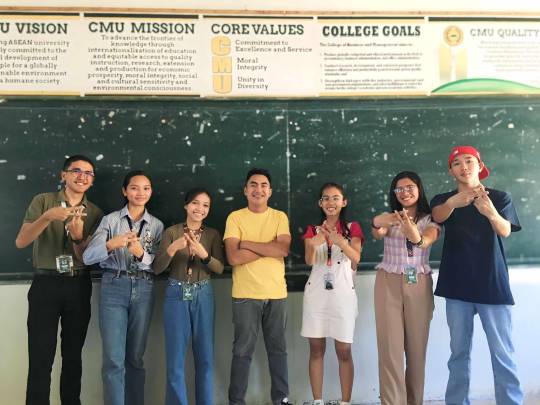
Last time, we interviewed people around Central Mindanao University about the issues they faced on campus. We gathered data and made use of the collected data to decide on a project for our start-up. The project we decided on was a reverse vending machine. The machine is designed to collect empty plastic bottles and cans in exchange for coupons or money as a reward and will make use of the collected plastics.
We also used the collected data in our venture proposal presentation. Before the proposal, we brainstorm our ideas by understanding our customers, asking for suggestions and opinions from other individuals, and listing the pros and cons of our product. In the planning and preparation of our proposal, collaboration and communication with the team were very effective as we worked to align the project goals. Unfortunately, we lost someone from our team. It is so sudden, but we were so excited for the coming proposal to prove our point and our idea together with her. But we did not think of it as an end. Her loss and the hard work she put into our project won’t be in vain, we will continue to move forward and work on it until we reach our goal.
Public speaking is really not my thing. I always get nervous, and I even had a panic attack before, when I’m talking in front of everyone. So, I volunteered to make a PowerPoint presentation to be presented on the proposal, and I will continue to work behind them like a shadow. I don’t care if others think that I have no use or that my team took all the credit, because I like it that way. My team agreed, and they supported my decision.
During the proposal, presenting the proposal to our instructor was a pivotal moment in the journey. It required not only presenting the project details but also effectively communicating its value proposition. This involved highlighting the benefits and pros of our machine while preparing to address any potential concerns or objections about our product. We got good feedback, and we got compliments on our presentation. However, we are questioned about whether we can really build a prototype with the features we have mentioned. Yes, it‘s quite challenging, but we believe that through hard work and teamwork, we can do it.
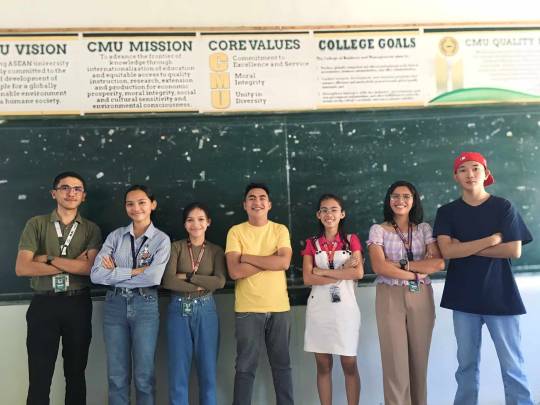
After the proposal, we are tasked with interviewing individuals for customer validation. In this task, we are going to ask individuals about their insights on our proposed project and ask them if they will use the machine when this project is implemented on campus.
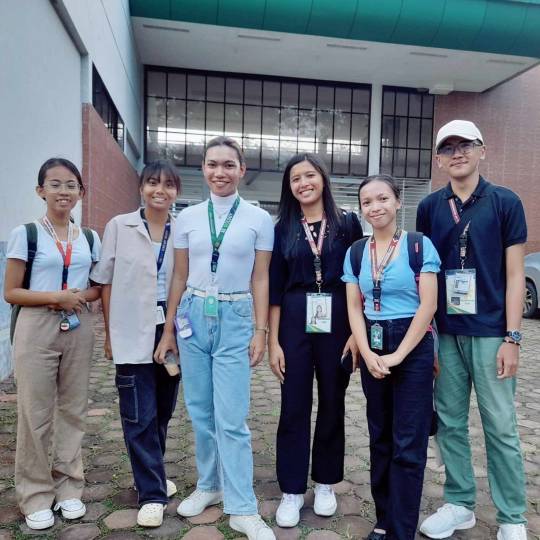
Embarking on a journey through the realm of interviewing someone is akin to stepping into their world—a voyage of discovery and understanding. The journey starts with the initial sparks of curiosity and the desire to know others insights about our project so we can gain knowledge and understand more about it. Each interviewee has different insights and opinions, which is really helpful for us. We learn to adapt to different personalities and communication styles, honing our listening skills and empathy along the way. The interviewee leaves a lasting impression on us, as they offer a unique perspective.
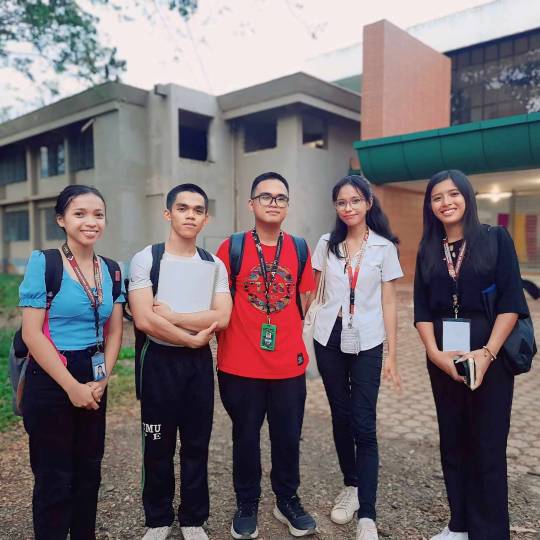
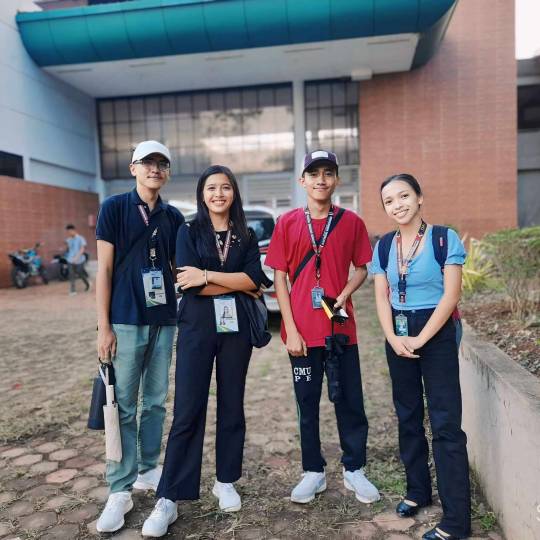
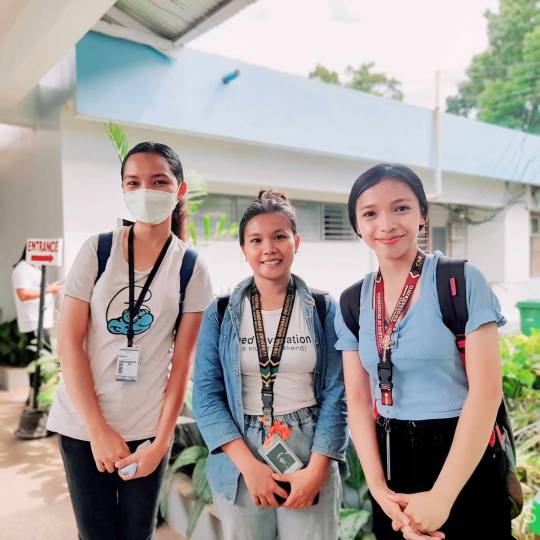
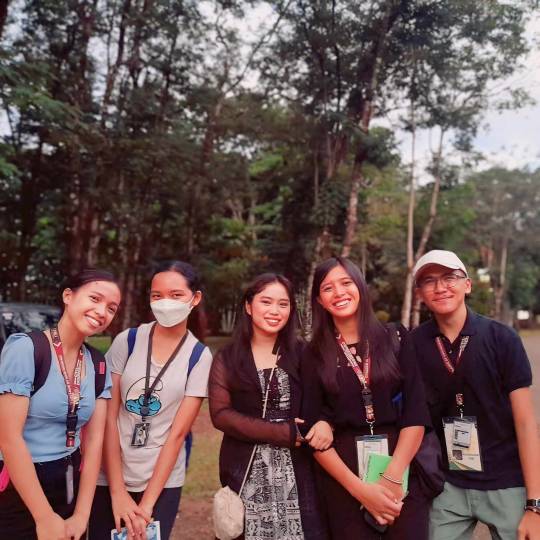
As we ask them about what they can say about our project, some give us positive insights. “As aspiring engineers, one thing that we are concerned about is sustainability. It is a good thing that you incorporate an eco-report. The concept is nice. And if this is implemented, surely I will use it because I will feel accountable for ensuring that I'm properly segregating my trash. Plus, being able to receive coupons or money as a reward is a nice incentive to recycle more. There is no need to go to junk shops or stores to sell your recyclables; at the same time, it helps you to be mindful of your trash.”
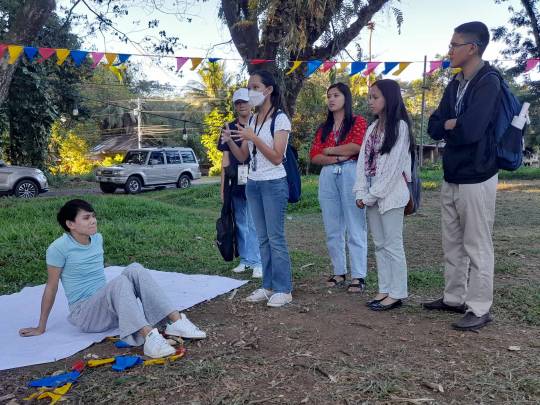
There’s someone who commented negatively, but what he said makes sense. It is an advantage to us because, in that way, we learned about the shortcomings of our project. We discovered where we are going to improve.
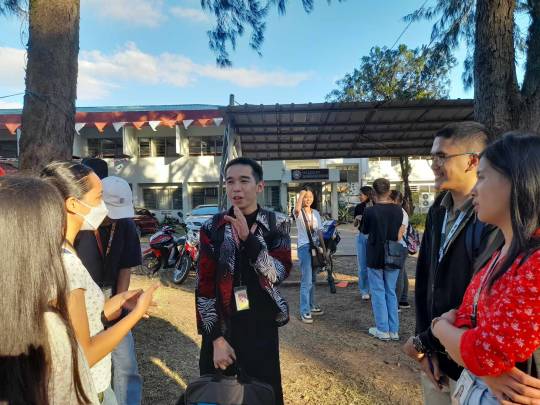
“A reverse vending machine in CMU would not be profitable due to the high costs of maintenance, electricity, and worker transportation. The vending machine alone cannot generate much profit as the bottles are sold to recyclers. To gain more profit, the business should consider creating a new product using the materials gained from the vending machine, which would be sold to the public. This would provide more profit than a vending machine that only collects bottles.”
As to his answer, we would like to add that our reverse vending machine is not just a machine that collects plastics. The collected plastics will surely be used to create another product like a plastic monoblock chair, and we could partner with the group whose product is a cement-plastic waste bench.
Based on their answers, we reflect on our shortcomings and will do better to improve and provide a good-quality product. Overall, the journey is a transformative experience that expands our horizons and deepens our understanding of our reverse vending machine project.
0 notes
Text
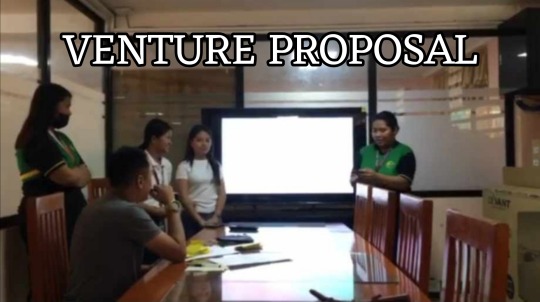
Title: Embracing Innovation: Navigating the Entrepreneurial Seas
In the ever-evolving landscape of innovation, February 14, 2024, etched a significant mark on our journey as we unfurled the sails of our venture proposal at CMU-CBM's Employee Lounge. This day wasn't just about flowers and valentines; it was about planting the seeds of a dream that would blossom into a compelling entrepreneurial tale.
As we stood amidst the vibrant ambiance of the lounge, the air buzzing with anticipation, we unveiled our innovative product with a blend of excitement and nervous energy. The Employee Lounge, a space that witnessed countless conversations and shared moments, became the backdrop for the commencement of our entrepreneurial expedition.
Guiding us through this uncharted terrain was our trusted adviser, a beacon of wisdom in the vast sea of possibilities. Their insights not only fortified our proposal but instilled in us the courage to set sail into the unexplored waters of entrepreneurship. Their words became the compass that would navigate us through storms and calms alike.
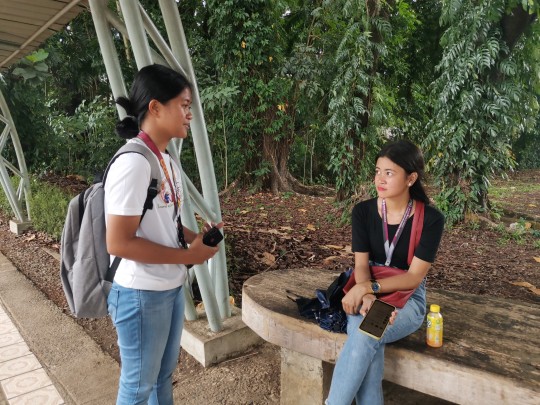
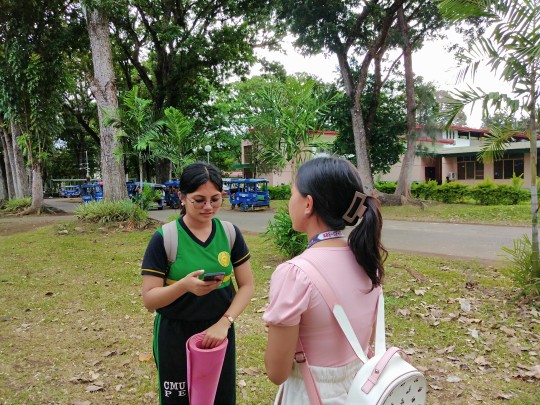
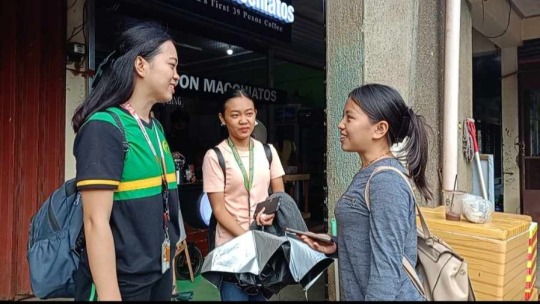
The aftermath of our presentation wasn't just applause; it was an invitation to embark on the next leg of our journey – seeking customer validation. The task at hand was as exhilarating as it was daunting, involving dialogues with our potential customers – the vibrant female students, the watchful security personnel, and the compassionate nurses within the medical field.
In the tapestry of conversations that unfolded, we discovered more than just potential customers. We found allies, individuals resonating with the heartbeat of our venture. The resonance of a resounding "Yes" echoed through the hallways of validation. It wasn't a mere acknowledgment; it was a harmony of affirmation, a melody that emboldened our steps.
The affirmation from our target audience isn't just a green light; it's the wind beneath our sails, propelling us forward into uncharted territories. The majority of positive responses became the fuel that energized our journey, reaffirming our belief in the value our venture brings.
As we reflect on this pivotal chapter, we invite you, our cherished supporters, to witness and participate in the unfolding narrative. Our venture proposal wasn't merely an event; it was the first brushstroke on the canvas of a compelling story. Together, let's explore the depths of creativity, innovation, and determination as we navigate the entrepreneurial seas, eager to embrace the challenges and triumphs that await.
In this shared voyage, we find strength in unity and inspiration in each positive response. The journey has just begun, and the horizon is painted with the hues of endless possibilities. Join us as we embark on this entrepreneurial odyssey, driven by passion, guided by wisdom, and fueled by the resounding "Yes" from those who believe in our vision. The canvas is vast, the journey exhilarating – let's set sail into the entrepreneurial unknown together. 🚀🌊
0 notes